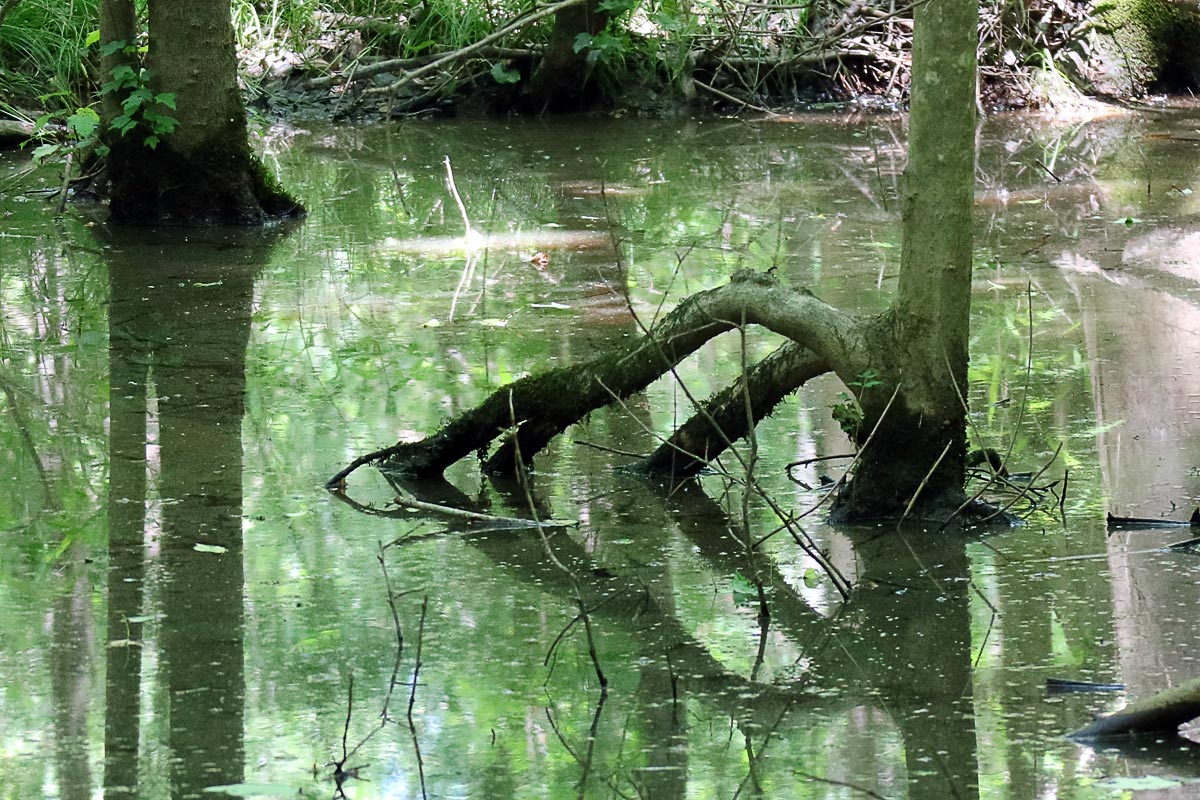
Hear the wind whisper in the trees
Telling Mother Nature about you and me
—Led Zeppelin
Three National Park Service sites in three days, and the first actual National Park in a while: Today Masayo and I visited Congaree National Park, a little-known and, in its way, quintessentially southern-style Park located in central South Carolina. The weather was perfect, the bugs were photogenic, and even diabetes behaved as hoped. Until dinnertime, anyway.
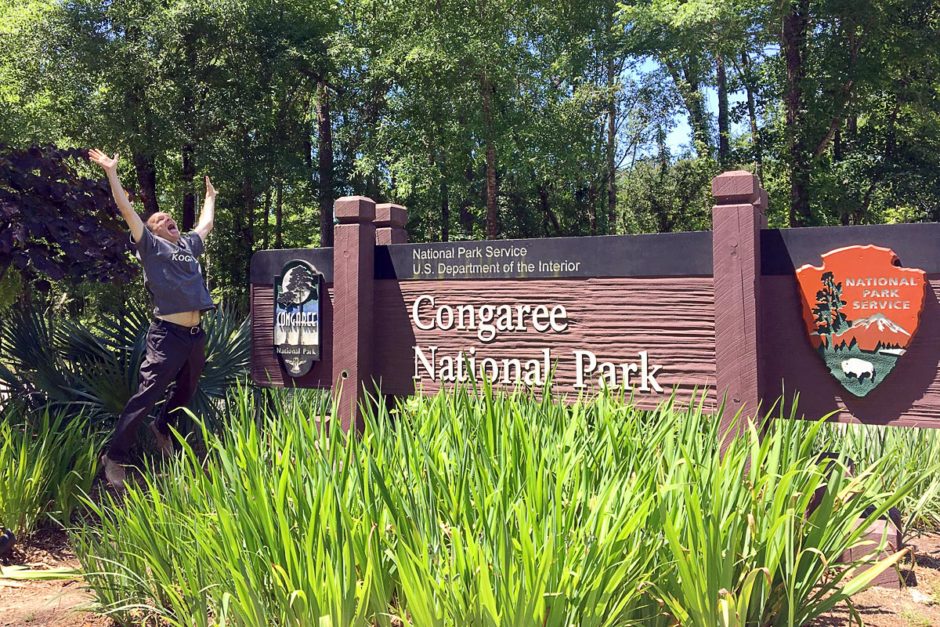
We had hoped to meet up with friends and do some canoeing and camping in Congaree but the plans didn’t materialize, so Masayo and I kept our Congaree visit simple: a stop by the visitor center and a stroll around the famous wooden boardwalk which takes you out into the swamp and through the gigantic trees overhead.

Masayo in the Congaree NP visitor center.
It was a weekend, and there were a surprising number of people in the visitor center. Not like the actual crowds at Castillo de San Marcos National Monument yesterday, but not the quiet desolation we’ve gotten used to here in the off-season. However, fate would give us a rather private tour of Congaree anyway: part of the boardwalk was under construction and it no longer made a big, handy loop. So most people were walking down one short side of it to the construction area and then turning around.

Masayo opted for the other route, which made a loop if you took a long off-boardwalk detour. It was an excellent choice: there were hardly any other people there, the temperature was as perfect as it can possibly be under the shade of the trees, and we got to leave the wooden walkway and walk on actual ground, stepping over mud and roots and catching glimpses of weird logs submerged in green algae-covered pools through the green leaves swaying gently as the sun filtered haphazardly through the trees.
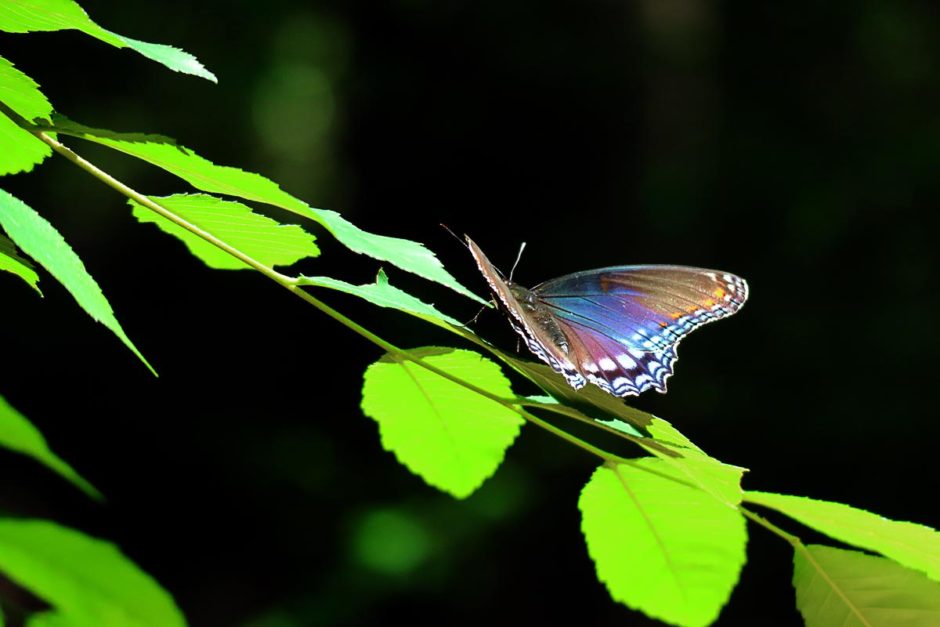
It turns out that Congaree isn’t really a swamp. Or it is; there seems to be some question about what it technically can be called. It’s a floodplain, and it floods and gets swampy. But is it a true swamp? A display in the visitor center reviews this question that seems to so far have no definitive answer. All we knew is that it has some similarities to Barataria Preserve, the undeniable swamp we visited in Louisiana, but also seemed more like a forest.


Either way, the walk was great. For about two hours we walked and listened to the rustling trees and the occasional bellowing distant frog. The only thing that spoiled the mood somewhat was the occasional super-loud jet flying overhead, machines that took an inordinately long time to get out of earshot and which, despite their seeming closeness, we could never see through the trees.

About those trees: Congaree National Park contains many of the biggest American trees east of the Mississippi River. All around us, their gigantic trunks reached far overhead, looking improbably thin for their height but managing a stately sturdiness. Southern charm, whatever that is, seemed to drift through their boughs beside and above us.
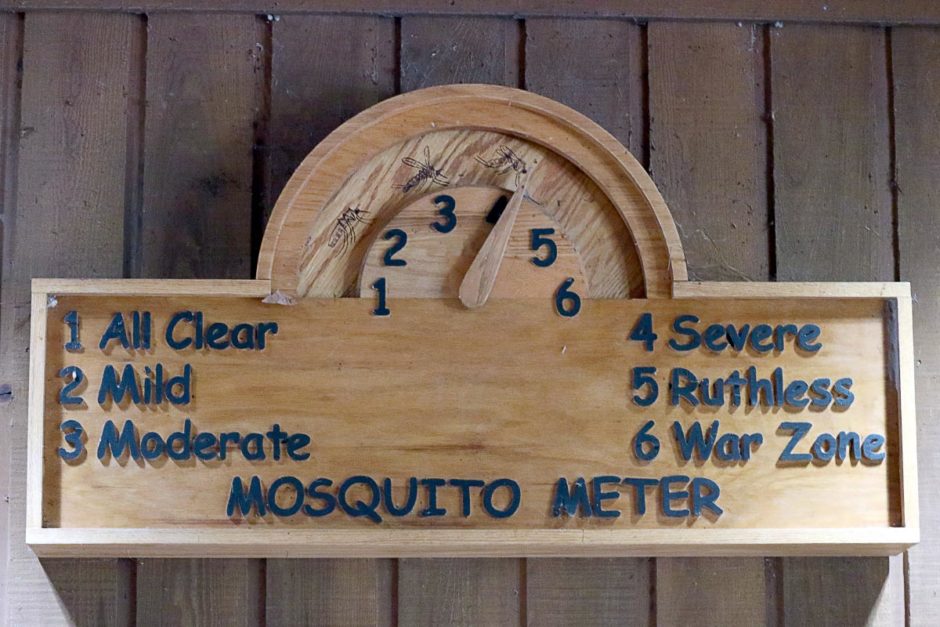
Despite a “Mosquito Meter” warning of “severe” at the visitor center, we didn’t see a single one on the walk. The creatures we did see – dragonflies, turtles, inchworms – kept to themselves, each displaying their individual talents and beauties for my camera but otherwise not wanting to bother us.
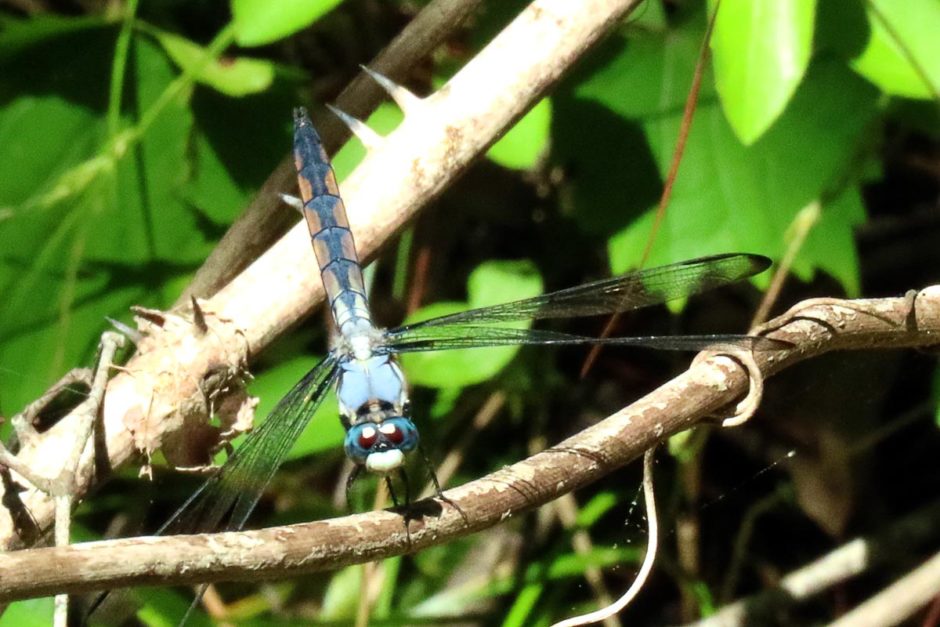

Two hours after the walk began we arrived again at the visitor center. The weather was still fine, and a nurturing sense of primeval calm had blanketed us. There are creeks and rivers to be kayaked, longer trails to be explored, and wild campsites to be established in Congaree National Park, but those things will have to remain elusive for us: a simple walk is sometimes all it takes.

Slowly descending blood sugar in the floodplain
An easy walk like the one in Congaree offers interesting insight into the behavior of blood sugar and the effects of mild but significant physical motion on it.
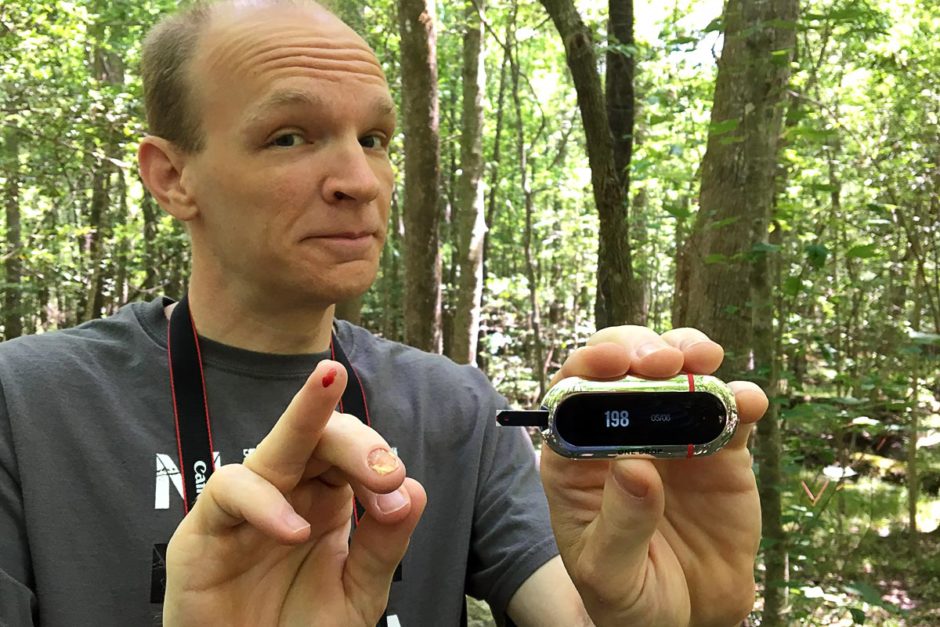
At the hotel room in Orangeburg this morning my BG was 144 – not too bad after a pre-bed low of 63 that I fixed with cookies. After a typical buffet breakfast in the hotel lobby, and just before starting the Congaree walk, I was 198. About where you’d want it before such an excursion.
I had glucose tablets with me, and of course my One Drop meter, but took no action yet, figuring I could check if I felt low. But I never did; towards the end of the walk I sat down on a bench and checked to find it was 88. Experience told me that it was probably an 88 on a slow course downward so I had a couple of glucose tablets and kept walking.
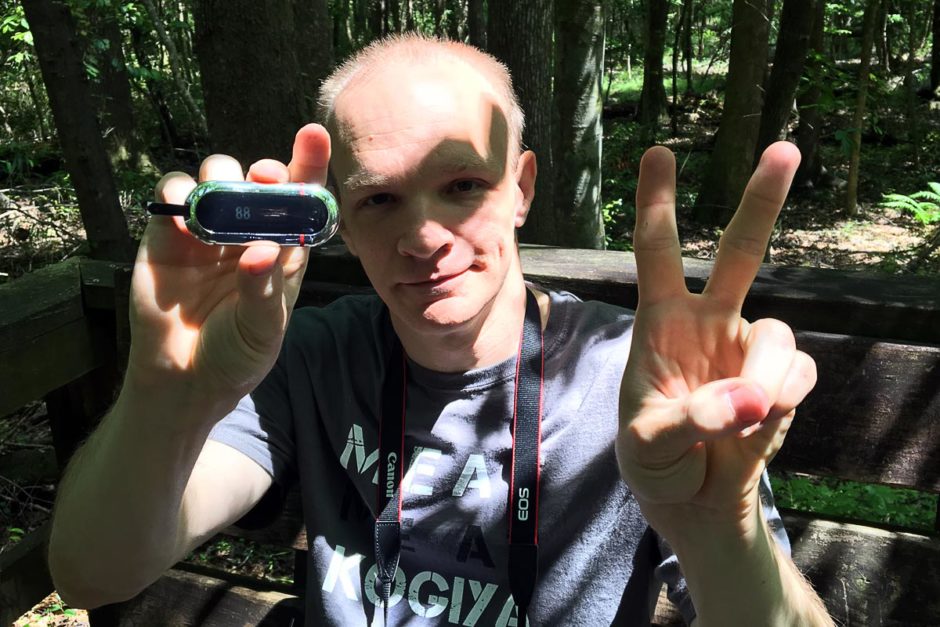
An hour or so later Masayo found ourselves sitting in the car in a dollar store parking lot, eating sandwiches we’d bought from a grocery store. South Carolina is exceptionally stingy with roadside picnic tables. I took eight units, where normally I’d take six or seven: my pre-dinner BGs are too high too often lately.

It didn’t work: before dinner I was 272. Blame it on the outsized chicken salad croissant, I guess. But not on Congaree National Park: the walk there was beautiful and the blood sugar admirable. Must be some kind of National Park magic.
Thanks for reading. Suggested:
- Share:
- Read next: Day 38: The lower and greener side of Great Smoky Mountains NP
- News: Newsletter (posted for free on Patreon every week)
- Support: Patreon (watch extended, ad-free videos and get other perks)

Support independent travel content
You can support my work via Patreon. Get early links to new videos, shout-outs in my videos, and other perks for as little as $1/month.
Your support helps me make more videos and bring you travels from interesting and lesser-known places. Join us! See details, perks, and support tiers at patreon.com/t1dwanderer. Thanks!
